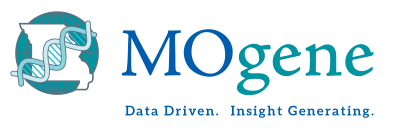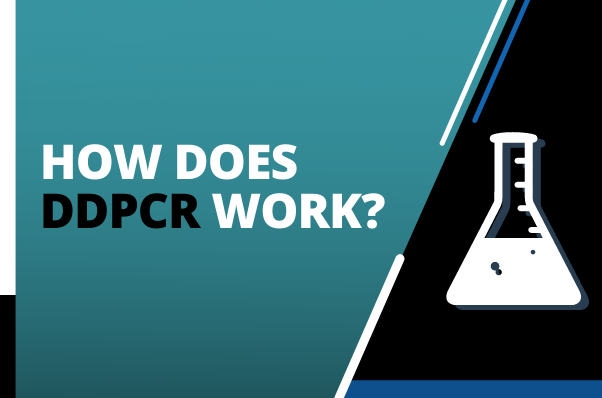In 1971, a paper was published in the Journal of Molecular Biology that first described the process of using heat-resistant enzymes together with primers to replicate a short DNA sequence in vitro. The actual invention of the polymerase chain reaction (PCR) came over a decade later, in 1983. PCR was a revolutionary biochemical technique that allowed scientists to replicate and amplify nucleic acid sequences in millions to billions of copies.
Sequencing, cloning, and analysis were no longer limited by tiny amounts of samples available for testing.
Several different PCR forms were developed through further refinement of this process, including the digital polymerase chain reaction (dPCR). Unlike other PCR variants, dPCR allows for absolute quantitation of the target DNA sample, opening new doors for scientific research and discovery.
Absolute Quantification
The hallmark of dPCR (and droplet digital PCR, as one of its subtypes) is absolute quantification. Conventional PCR methods are only semi-quantitative – their final product has to be detected by agarose gel electrophoresis. Real-time PCR (qPCR) is relatively quantitative – it requires the use of standard curves and extrapolation based on patterns to calculate the target concentration of the nucleic acid in the original sample.
Digital PCR doesn’t need any referencing or extrapolation. After the amplification reactions are complete, it precisely and discretely measures the number of target molecules present at the beginning. This is achieved through massive partitioning or dividing the sample into thousands of individual compartments (droplets) that do not compete with one another. Each compartment represents a PCR reaction on its own. dPCR, therefore, offers thousands of data points instead of only one single result, leading to higher quantification accuracy.
The Principles of ddPCR Technology
Droplet digital PCR has emerged in the scientific community only in the last decade or so. It represents one of the most sensitive, precise, and accurate methods for amplifying and quantifying sequences of different nucleic acids (DNA, RNA, and cDNA).
ddPCR is based on a water-oil emulsion droplet system. The massive partitioning required for this type of PCR is performed in a single step thanks to a combination of surfactants and microfluidic technology. The ideal number of independent partitions or nanoliter-sized droplets in this process is twenty thousand. A single partition should contain zero or one template molecule (but no more than a few).
After the amplification, each droplet is analyzed with a fluorescent probe. If it contains at least one target copy, it is a positive droplet (fluorescent droplet). If it doesn’t contain any target copies, it is a negative droplet (exhibiting little to no fluorescence). This ratio of positive droplets to negative droplets is then analyzed with Poisson statistics to determine the concentration of the DNA template in the original sample.
ddPCR Workflow
Before a ddPCR experiment is performed, it is essential to understand the goal or the desired outcome of the experiment. Different experiment types require different amounts of target sequences, different preparation methods for the sample, and different kinds of data analysis. If it is well-designed and properly optimized, there is no reason for a PCR reaction not to yield robust results that can easily be reproduced.
Because ddPCR focuses on end-point analysis to generate the required quantitative data, it doesn’t depend on amplification efficiency as much as qPCR. Nevertheless, special care should be taken in assay design and optimization to allow for a clear differentiation between positive and negative droplets.
A significant advantage to ddPCR is that it is relatively simple to execute, especially with the right ddPCR system. The preparation, amplification, and analysis workflow consists of six steps in total:
0. Preparation
Every PCR analysis begins with adequately preparing the samples. This process for ddPCR is no different from real-time assays: aside from the target nucleic acid, a ddPCR supermix, primers, and fluorescent probes are required.
The nucleic acid that’s being tested should be properly extracted from the raw material. The sample should not be degraded in any way, and it is recommended to remove as many PCR inhibitors as possible. ddPCR accuracy is not so sensitive to PCR inhibitors, but they should be eliminated anyway. If this is not possible, then an option would be to dilute the sample 1:10, which will also dilute the inhibitor.
Commonly used ddPCR systems provide absolute quantification of nucleic acid molecules with EvaGreen assays or probe-based dPCR assays. Using hydrolysis probes leads to increased specificity, the ability to perform multiple complex reactions, and a higher signal-to-noise ratio.
20 µl of the prepared sample should be loaded into the individual microwells of the droplet generator cartridge.
1. Droplet Generation
The droplet generator uses microfluidics and specific reagents to partition each sample well into twenty thousand droplets. A good ddPCR system should create droplets that are uniform in size and volume.
The distribution of target molecules among the droplets is random. As mentioned above, some droplets contain no template, some only one, and others more than one. Because of this random nature of droplet formation, fluorescence data at the end of the experiment can be fitted to a Poisson distribution.
2. PCR Amplification
Once the droplets are generated, they can be transferred to a 96-well PCR plate compatible with any thermal cycler. The plate should be sealed, and PCR should be performed to the endpoint (full 40 cycles).
3. Droplet Reading
Following the amplification, the samples should be loaded into the droplet reader. In it, each well is read serially. Droplets are arranged in a single file to pass through a two-color detection system droplet by droplet. The droplet reader then counts which ones are positive and which are negative and how many of each there are in the individual samples.
4. Analyzing the Results
The positive droplets exhibit increased fluorescence compared to the negative droplets. This fraction of positive droplets determines the initial copy number of the target nucleic acid molecule in units of copies per µl.
Poisson’s law of small numbers is crucial here. It declares that if there is a random distribution of independent events that can be quantified, it is possible to predict the likelihood with which these events occur. A Poisson distribution is then used to determine how likely it is that 0, 1, 2, 3, or more template sequences are found in each droplet from the fluorescence data. The greater the number of droplets, the higher the accuracy of the results.
Technically speaking, errors in estimation are negligible compared to error rates in sample processing, pipetting, and biological variation.
5. Visualizing the Data
Well-rounded software that supports the ddPCR system should have the ability to visually represent the results and other types of data gathered during the experiment. Data visualization should be possible in any number of ways to present the concentration of copies/µl.
Conclusion
ddPCR is a form of PCR that provides absolute quantification, compared to the relative quantification of qPCR and semi-quantification of traditional PCR. It is based on a partitioning principle: the sample containing target DNA molecules is divided into 20,000 nanoliter-sized droplets. Each droplet represents an individual PCR reaction that occurs during the amplification process.
Advantages of ddPCR over other forms of PCR are its higher sensitivity, precision, and accuracy. It is practical and easily scalable and delivers reliable, reproducible results. Unlike with qPCR, there is no need to use standard curves on any references in calculating the absolute concentrations of the target template.
ddPCR has taken its rightful place in clinical settings for allele detection, rare mutation detection, determination of copy number variation, gene expression analysis, and more. It is instrumental in pinpointing rare sequences in a wild-type background. This method is proving to be a powerful tool in oncology and immunology in diagnostics and research.
Do you have any questions about ddPCR? Are you interested in hiring a ddPCR service provider for your project? Contact MOgene to find out how we can help you in this process.

